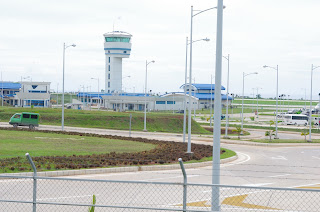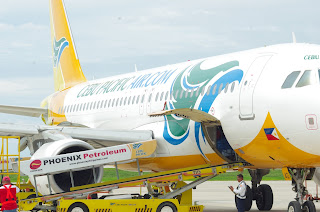 |
| Pres. Aquino |
After Nur Misuari’s declaration of independence of the
Bangsa Moro Republik in Talipao, Sulu on August 12, 2013, his more than 200
armed Moro National Liberation Front (MNLF) followers led by Ustadz Habier Malik sneaked into the coastal
villages of Zamboanga city on September 9, 2013, to hoist the Bangsa Moro Republik
flag at the front of the city hall.
Maria Isabelle Climaco- Salazar, the mayor of the City,
refused to give in to the demand of the armed groups, and this led to firefights
between the combined city police and the military personnel that were assigned
in the area against the intruding militants. The fighting forced civilians to leave their homes and to evacuate
in safer places at the heart of the city. As the fighting continued more
people left their homes to seek refuge in evacuation centers. In addition, the
conflict forced business, schools, airports and other establishments to shut
down. Mayor Climaco sought the assistance of the national leadership to help
her deal with the crisis.
President Benigno S. Aquino III ordered Manuel Roxas III,
his DILG Secretary, to go to Zamboanga to oversee the police operation against
the militants. As the battle raged on and the number of evacuees increased, the
president also ordered Defense Secretary Voltaire Gazmin and AFP Chief of Staff
Gen Emmanuel Bautista to go to Zamboanga to further strengthen police and
military actions there. Later, the president who is also the commander in chief
of the police and the armed forces joined his troops in Zamboanga.
Having previously warned Misuari’s group that the government
would not hesitate to use its power and its resources against those who would
break the law, the president made good his words. Aside from the troops that
were already on the ground, he called in the most elite fighting units of the Armed
Forces of the Philippines such as the Scout Rangers and the Special Forces to further strengthen his forces. In addition air
assets and naval ships were also directed to bear down on the militants.
The forces of Misuari led by Ustadz Habier Malik however
were unyielding. Since they could not engage the government forces head on, they
took some civilians as hostages to shield themselves from government forces’ fires. The militants were
even accused of deliberately burning houses to conceal themselves and slow down the advance of government forces.
Eventually, the MNLF forces were pushed and constricted into
the coastal villages but were still holding some hostages and exchanging fires.
Despite their difficulties, the militant refused to capitulate and gave
the government forces as good as what they got. They might have think that by
prolonging the battle as long as it take would exacerbate the crisis and bring
it to the attention of international media, the intervention of the United
Nations or the Organization of Islamic Conference. Moreover, the destruction of homes and properties, the paralysis of businesses and the increasing number of evacuees were about to create a humanitarian crisis in the city. These situations might prompt the government to initiate a ceasefire, a development that would be favorable to the militants.
Meanwhile, Vice President Jejomar Binay had a communication
with Nur Misuari on a ceasefire between the government forces and the latter’s
armed group. The Vice President then reported to the president in Zamboanga to
present his proposal to him. However, the president turned down the idea.
Apparently the president made the right move in rejecting a
ceasefire because it would enable Misuari’s troops who participated in the
siege to get away with their deeds. A ceasefire could also be misinterpreted that
it was the militants who had the control of the situation, and Misuari might later
exploit it to his advantage. A ceasefire would also have given a morale boost to the
remaining MNLF fighters and restore the sagging image of Misuari as a leader of the
Moros. On the other hand, a ceasefire declared by the commander-in-chief when
his troops had already taken a number of casualties, and when they were in the
upper hand in the battle would have demoralized them.The surrender of the militants to end the fighting would have been more acceptable to them.
With no ceasefire effect, the remaining militants took a
beating from the government forces. As the fighting continued, they ran low on
ammunition, and they starved because their supporters could not penetrate food
supplies past the cordon of troops. Slowly but surely, the remaining militants
surrendered or were killed. It was a surrender or die situation for them. On September 28, 2013, the government declared an
end of military operations when all of the remaining hostages were rescued by
the soldiers. However, the fate of Habier Malik, the leader of the militants in the siege of the city is still unknown. He was not among those who were
captured or had surrendered, and the troops could not identify him among the
dead militants either.
The government declared the end of the crisis on September
28, 2013. But losses in terms of lives and cost of properties were enormous. The
MNLF suffered 183 killed and 192 members captured. The government forces had 25
soldiers (two officers) killed and 184 wounded. On the civilian side there were
12 dead and 70 wounded. There were about 10,000 houses that were
burned and more than one hundred thousand people were displaced. It is estimated that the
government must have to spend billions of pesos to rehabilitate Zamboanga City and help
its people that were affected by the armed conflict.
The government forces under the leadership of President
Benigno Aquino III have decisively defeated the forces of Nur Misuari in the
siege of Zamboanga. Many however are perturbed with the massive destruction
suffered by the city as a result of the siege. But it is the responsibility of the
president to impose his powers under the law to protect his people and assert
state’s sovereignty even if the price of doing so is heavy.











.jpg)